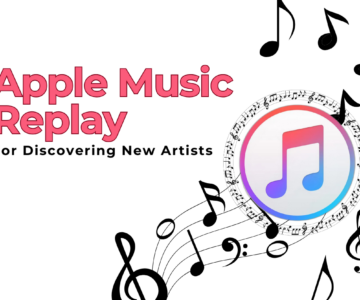
From Book-to-Screen: Analyzing Entertainment Adaptations
The book-to-screen adaptation has become an integral part of the entertainment industry’s landscape, with filmmakers constantly seeking to translate beloved literary works onto the silver screen or television. In the entertainment industry, adapting literary works for visual medium has long been a practice. From beloved books to current blockbusters, the move from print to screen presents chances and problems for authors, filmmakers, and readers alike. We will go into the intriguing realm of entertainment adaptations in this blog post, dissecting the nuances of the procedure and assessing its effects on narrative and audience reaction.
The Art of Adaptation:
A book’s adaptation for the screen or television is a complicated artistic process that calls for careful consideration of a number of variables. Filmmakers have to deal with the difficulty of reducing a long story to a shorter length while maintaining the spirit of the original work. This involves deciding which ideas, characters, and storylines to emphasize and coming up with original methods to turn the author’s words into visual narrative.
Filmmakers need to fully understand the book’s themes, characters, and plot before adapting it. This knowledge helps them decide what to keep, cut, or change in the movie. Adapting books to movies or TV requires restructuring plots and condensing details due to differences in narrative structure, where books explore inner thoughts and subplots while visual storytelling dominates in films and shows.
Adapting a book-to-screen requires balancing character development and visual translation while maintaining pacing and respecting the author’s intent. Engaging with the fanbase’s expectations is crucial for a successful adaptation.
The Evolution of Adaptation:
The skill of adaptation is always changing along with the advancement of technology. Filmmakers are now able to bring imaginative landscapes and larger-than-life people to life in ways that were previously unthinkable because to advancements in computer graphics and visual effects. Furthermore, filmmakers now have more opportunity to experiment with long-form storytelling and go deeper into the nuances of intricate storylines thanks to the growth of streaming services.
Challenges and Opportunities:
Managing audience expectations is one of the major obstacles in translating book-to-screen. The original book’s readers might have ideas about how particular scenes or characters should be depicted, which makes it challenging for filmmakers to find a balance between creative interpretation and fidelity to the source material. Filmmakers may, however, also take use of this process to give well-known stories a new lease on life by including novel viewpoints and inventive narrative strategies.
Successes and Failures:
Several popular adaptations have been made throughout the years, captivating both reviewers and viewers. Film adaptations of legendary works of literature, such as “The Lord of the Rings” trilogy, and critically acclaimed television shows, like “Game of Thrones,” have shown how narrative can be universally embraced and appreciated across media. There are, nonetheless, instances of unsuccessful adaptations that failed to live up to the charm of the original work and for which there is a positive correlation.
First Book-to-Screen Movie:
“The Great Train Robbery” (1903), the first book-to-screen adaptation, attracted a lot of attention for its avant-garde narrative technique. Its cinematic history was revolutionized by its adaptation of Edwin S. Porter’s novel of the same name, which introduced spectators to the idea of narrative filmmaking. The film enthralled audiences with its gripping action scenes and engaging narration, even with its little duration and inadequate technological capabilities. Its groundbreaking methods were commended by critics, establishing a standard for upcoming adaptations. It had a remarkable effect on viewers, igniting a general curiosity with the potential of cinematic narrative and establishing the foundation for the modern adaptation business.
One more notable example of a successful book-to-screen adaptation is “Harry Potter and the Sorcerer’s Stone.” Chris Columbus directed the picture, which was widely praised by reviewers and viewers when it was first released in 2001. It brought iconic characters like Harry, Ron, and Hermione to millions of fans while accurately capturing the magical world created by J.K. Rowling.
The film received high marks from critics for its superb youthful cast performances, amazing visual effects, and accurate retelling of the original novel. It appealed to a broad audience beyond the ardent readers of Rowling’s books and did a fantastic job of capturing the essence of her magical universe.
All things considered, “Harry Potter and the Sorcerer’s Stone” raised the bar for book-to-screen adaptations by proving that acclaimed literary works can be brought to life in ways that enthrall and engage viewers everywhere.
Read Also : Maximizing The Impact Of Video Content On Social Media
Impact on Literature and Culture:
Beyond the worlds of cinema and television, entertainment adaptations have a profound impact on how we view and interact with literature and culture in general. Well-executed adaptations have the power to present famous books and writers to new audiences, rekindling interest in renowned classics and encouraging readers to investigate uncharted subjects and genres. On the other hand, poor adaptations can harm the standing of the original work, demoralizing admirers and making them unwilling to read the original novel again.
Recent Book-to-Screen Adaptations:
“Dune” – Directed by Denis Villeneuve, this adaptation of Frank Herbert’s classic science fiction novel mesmerized audiences with its stunning visuals and epic storytelling.
“The Power of the Dog” – Directed by Jane Campion, this adaptation of Thomas Savage’s novel received critical acclaim for its atmospheric cinematography and powerhouse performances, particularly from Benedict Cumberbatch and Kirsten Dunst.
“The Last Duel” – Directed by Ridley Scott, this historical drama, based on the book by Eric Jager, brought to life the gripping tale of betrayal and vengeance in medieval France, featuring a stellar cast including Matt Damon, Adam Driver, and Jodie Comer.
“The Lost City of Z” – Directed by James Gray, this adaptation of David Grann’s non-fiction book took audiences on a riveting journey into the heart of the Amazon rainforest, exploring the mystery of explorer Percy Fawcett’s disappearance.
“Where the Crawdads Sing” – Directed by Olivia Newman, this adaptation of Delia Owens’ bestselling novel enchanted audiences with its poignant story of love, loss, and resilience set against the backdrop of the North Carolina marshlands.
Conclusion:
In conclusion, the adaptation of literary works into visual media is a multifaceted process that requires careful consideration of storytelling, creativity, and audience reception. Despite many obstacles, well-executed adaptations have the ability to enthrall viewers, revitalize well-known tales, and motivate future generations of viewers and readers. Entertainment adaptations are expected to remain dynamic and intriguing in the future as storytelling styles and technology both advance.


